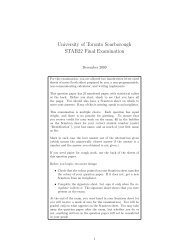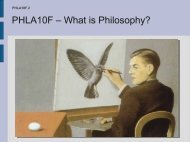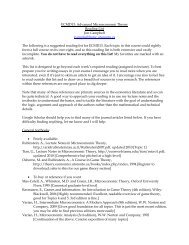- Page 1 and 2: Project on an Annotated Bibliograph
- Page 3 and 4: Preface INCLUSIONS AND EXCLUSIONS W
- Page 5: v Preface works which are purely ph
- Page 9 and 10: SOURCES ix Preface In preparing the
- Page 11 and 12: xi Preface Perfect Bibliography [bi
- Page 13 and 14: 1. Aalto, P. 1953. Studien zur Gesc
- Page 15 and 16: 30. Abusch, Dorit. 1985. “On Verb
- Page 17 and 18: method and verbal aspect.] Emerita
- Page 19 and 20: 98. Alarcos Llorach, E. 1947. “Pe
- Page 21 and 22: The Northeast Turkic Progressive Pr
- Page 23 and 24: [Aspect in Arabic: Suggestions for
- Page 25 and 26: 200. _____. 1952. Metaphysics. Chic
- Page 27 and 28: 236. Avilova, N. S. 1959. “O kate
- Page 29 and 30: 272. Baek, Eung-Jin. 1986. “Tense
- Page 31 and 32: Aussagenlogik. [Semantics of the Ge
- Page 33 and 34: 336. Barri, Nimrod. 1978. “The Gr
- Page 35 and 36: van der Wurff (eds.), Reported Spee
- Page 37 and 38: imperfect of the subjunctive in a s
- Page 39 and 40: 444. Berdyev, R. 1984. “Proshedsh
- Page 41 and 42: pubblicati dall’Accademia della C
- Page 43 and 44: 511. Bianchi, Valentina, Mario Squa
- Page 45 and 46: 545. Black, David Alan. 1992. “Gr
- Page 47 and 48: development and its stylistic value
- Page 49 and 50: 616. Bonami, O. 1997. “Aspectual
- Page 51 and 52: verbal forms in narration: a study
- Page 53 and 54: past anterior in contemporary Bulga
- Page 55 and 56: Southeast Asian Languages. Berkeley
- Page 57 and 58:
750. _____. 1992. “Italokroatisch
- Page 59 and 60:
English and Netherlandic Grammar. (
- Page 61 and 62:
815. _____. 1955. “A Greek Future
- Page 63 and 64:
français.” [Modal ↑_↓ tempor
- Page 65 and 66:
51.356-58. 880. _____. 1998. “Lak
- Page 67 and 68:
916. Cartagena, Nelson. 1992. “Ac
- Page 69 and 70:
Sorted Result Stages in the Lexicon
- Page 71 and 72:
978. Chatterjee, Ranjit. 1982. “O
- Page 73 and 74:
1013. Christensen, F. 1976. “Sour
- Page 75 and 76:
Psycholinguistics. Amsterdam: North
- Page 77 and 78:
study of aspects in narrative disco
- Page 79 and 80:
Perspectives on Grammar.) Berlin: M
- Page 81 and 82:
1156. _____. 1988. “On the Tempor
- Page 83 and 84:
Slavic and East European Journal 32
- Page 85 and 86:
systems.” B. Butterworth, B. Comr
- Page 87 and 88:
1267. Danaher, David Scott. 1995.
- Page 89 and 90:
d’A. Daudet. [Free indirect style
- Page 91 and 92:
1328. DeCaen, Vincent J. 1995. “O
- Page 93 and 94:
Vuillaume (eds.), Variations sur la
- Page 95 and 96:
Semantik, Universität Leipzig, 11-
- Page 97 and 98:
of temporal complements.] Langue Fr
- Page 99 and 100:
1466. Dimitrova, Mariika. 1991. “
- Page 101 and 102:
1498. Donatus (Probus Donatus Servi
- Page 103 and 104:
ekvivalenti na bulgarski ezik.” [
- Page 105 and 106:
1565. Dudman, V. H. 1985. “Thinki
- Page 107 and 108:
Aspect and Actionality, vol. II, Ty
- Page 109 and 110:
Abraham and T. Janssen (eds.), Temp
- Page 111 and 112:
1672. _____. 1998a. “Absolutely P
- Page 113 and 114:
Plusquamperfekts im Deutschen.” [
- Page 115 and 116:
argumentation.] M. Dyhr, K. Hyldgaa
- Page 117 and 118:
1767. Fayer, Joan M. 1990. “Niger
- Page 119 and 120:
1800. _____. 1990a. “Narrative Co
- Page 121 and 122:
Fleischman (eds.), Modality in Gram
- Page 123 and 124:
de la Société de Linguistique de
- Page 125 and 126:
Uppsala: A.-B. Lundequistika Bokhan
- Page 127 and 128:
1942. Fritz, Thomas. 1994. “Passi
- Page 129 and 130:
1971. _____. 1997. “The Progressi
- Page 131 and 132:
irleshmeleri.” [Usage of Aspectua
- Page 133 and 134:
2042. _____. 1974. “Untersuchunge
- Page 135 and 136:
Conditions.” A. Z. Wyner (ed.), I
- Page 137 and 138:
2109. Gleasure, James. 1990. “The
- Page 139 and 140:
2148. Gordon, Amnon. 1982. “The D
- Page 141 and 142:
Events and Grammar Conference, Bar-
- Page 143 and 144:
2218. Grover, Mark Donald. 1982.
- Page 145 and 146:
2250. _____. 2001. “On the Aspect
- Page 147 and 148:
Reiner Pogarell, and Cornelia Wela
- Page 149 and 150:
2322. _____ and A. Steube. 1970.
- Page 151 and 152:
(Trends-in-Ling.:-State-of-Art-Repo
- Page 153 and 154:
Arbeiten, 308.) Tübingen: Niemeyer
- Page 155 and 156:
2430. He, You-Qi. 1996. “Deux niv
- Page 157 and 158:
2461. Helland, Hans-Petter. 1995.
- Page 159 and 160:
[Grammatical categories and textual
- Page 161 and 162:
Cicero.” Cahiers de l’Institut
- Page 163 and 164:
2572. _____. 1977. “First Approac
- Page 165 and 166:
and Aktionsart, in regard particula
- Page 167 and 168:
Narrative in Classic Maya Texts.”
- Page 169 and 170:
2685. Hurst, A. 1985. “Aspects du
- Page 171 and 172:
temps en Bantu: système comparé d
- Page 173 and 174:
[The words togda ‘then’, teper
- Page 175 and 176:
2793. Jakuliene, Audrone. 1987. “
- Page 177 and 178:
2827. _____. 1996a. “Tense in Rep
- Page 179 and 180:
2859. Jiang, Yongmin. 1996. “Tens
- Page 181 and 182:
Narratives.” Linda Kay Jones (ed.
- Page 183 and 184:
2933. Kacala, Jan. 1988. “Semanti
- Page 185 and 186:
2969. Kangasmaa-Minn, E. 1978. “O
- Page 187 and 188:
category of aspect in active partic
- Page 189 and 190:
3034. Kershner, Tiffany Lynne and R
- Page 191 and 192:
Tense, Mood and Aspect.” Lingua 8
- Page 193 and 194:
from Romance. London: Routledge, 16
- Page 195 and 196:
Aktionsart of the tenses of the pre
- Page 197 and 198:
Reprinted, Darmstadt: Wissenschaftl
- Page 199 and 200:
Recherche sur la Référence Tempor
- Page 201 and 202:
3237. _____. 1998. “Aspect in adj
- Page 203 and 204:
58. Presented at 7. Groninger Gramm
- Page 205 and 206:
3304. Kuhn, Steven. 1979. “The Pr
- Page 207 and 208:
81. Review article; review of Johan
- Page 209 and 210:
Knowledge Representation. Groningen
- Page 211 and 212:
Nominals.” Presented at the Lingu
- Page 213 and 214:
3446. _____. 1996. “Le médiatif
- Page 215 and 216:
Conference on Formal Linguistics 15
- Page 217 and 218:
elated constructions.] Verslangen e
- Page 219 and 220:
Germanisch-Romanische Monatsschrift
- Page 221 and 222:
3576. Lie, Kang-ho. 1991. Verbale A
- Page 223 and 224:
3608. Link, Godehard. 1987. “Alge
- Page 225 and 226:
Analysis.” Linguistics and Philos
- Page 227 and 228:
[Syntax of the tenses in the “Ess
- Page 229 and 230:
of the past tense.] Russkij jazyk v
- Page 231 and 232:
3748. Makino, Seiichi. 1970. “An
- Page 233 and 234:
3781. Marie-Reppert, Danièle. 1994
- Page 235 and 236:
Presented at Second Chronos Confere
- Page 237 and 238:
slanjanskogo glagol’nogo vida.”
- Page 239 and 240:
Pidginization and Creolization. (Cr
- Page 241 and 242:
3906. McArthur, Robert P. 1973. “
- Page 243 and 244:
Diminution: On So-Called -k-Verbs i
- Page 245 and 246:
Perfect: a praeteritum perfectum (p
- Page 247 and 248:
tutkimus raporttesij, 39.) Oulo: Ou
- Page 249 and 250:
4055. Mikhov, Nikolaj. 1979. “Ba
- Page 251 and 252:
of State in Russian.] Studia Univer
- Page 253 and 254:
on Deixis, CRIN, Nancy, 28-30 mars
- Page 255 and 256:
4157. Moneglia, Massimo. 1979. “A
- Page 257 and 258:
4188. Morissey, M. 1973. “The Eng
- Page 259 and 260:
4218. _____. 1990. “Time Referenc
- Page 261 and 262:
Deccan College Research Institute 4
- Page 263 and 264:
Studies in Language, 12.) Amsterdam
- Page 265 and 266:
ingressivy, intseptivy.” [Main ty
- Page 267 and 268:
4344. Nelken, Rani. 1997. “The an
- Page 269 and 270:
of French and Bulgarian.] Sa°posta
- Page 271 and 272:
4416. Nurse, Derek. 1988. “The Bo
- Page 273 and 274:
4458. _____. 1998. “The ambiguity
- Page 275 and 276:
[Marginal note on the Finnish syste
- Page 277 and 278:
4528. _____. 1991. “K semantike n
- Page 279 and 280:
Katerina Nicolaidis and Maria Sifia
- Page 281 and 282:
kategorij vremennoj otnesennosti i
- Page 283 and 284:
appear in M. Kenstowicz, ed., Ken H
- Page 285 and 286:
4677. Pierce, J. 1971. “A Look at
- Page 287 and 288:
[The logic of time and the theory o
- Page 289 and 290:
the Bulgarian and Georgian verb.] S
- Page 291 and 292:
Whatmough on his Sixtieth Birthday.
- Page 293 and 294:
Ulrich Schmitz, Rudiger Schutz, and
- Page 295 and 296:
Osmania Papers in Linguistics 16-17
- Page 297 and 298:
4888. Rauhut, Frank. 1986. “Have:
- Page 299 and 300:
Approach.” Göttinger Miszellen 1
- Page 301 and 302:
4962. Riddle Elizabeth. 1978. “Se
- Page 303 and 304:
epresentation.] Read at the Interna
- Page 305 and 306:
dedicated to Lennart Åqvist on his
- Page 307 and 308:
5070. _____. 1995. “Temps et moda
- Page 309 and 310:
Latin perfect: aspectual value?.] C
- Page 311 and 312:
[Syntactic functions of the Latin i
- Page 313 and 314:
167-74 in Expériences et critiques
- Page 315 and 316:
5206. Saussure, Louis de. 1996. “
- Page 317 and 318:
5232. Sc‡ur, G. S. 1963. “Some
- Page 319 and 320:
5264. _____. 1990. “Between Text
- Page 321 and 322:
5300. _____. 1985. “On Aspect in
- Page 323 and 324:
5332. Schramm, Andreas. 1997. “As
- Page 325 and 326:
5366. Segal, Erwin M. 1995. “Narr
- Page 327 and 328:
Transactions of the American Philol
- Page 329 and 330:
5439. Shirai, Yasuhiro. 1993. “In
- Page 331 and 332:
MIT Working Papers in Linguistics,
- Page 333 and 334:
principles of the generation of tem
- Page 335 and 336:
5540. _____. 1978. “Constraints o
- Page 337 and 338:
5579. Soden, Wolfram von. 1994. “
- Page 339 and 340:
guillaumienne du verbe français.
- Page 341 and 342:
Zeitformen.” [The situation of na
- Page 343 and 344:
Danske Videnskabernes Selskab, Hist
- Page 345 and 346:
umanskija ezik.” [The use of aori
- Page 347 and 348:
Gesellschaftswissenschaftliche-Reih
- Page 349 and 350:
tenses in Greek.] Lund: H. Ohlsson.
- Page 351 and 352:
Present: Evidence from Samana.” L
- Page 353 and 354:
5865. _____. 1987. “Pour-Relateur
- Page 355 and 356:
(Acta universitatis upsaliensis, St
- Page 357 and 358:
exemples dans quatres langues d’A
- Page 359 and 360:
Semantics and Pragmatics. (Typologi
- Page 361 and 362:
Thieroff and Joachim Ballweg (eds.)
- Page 363 and 364:
Objects. Stanford, California: Cent
- Page 365 and 366:
Sprache der Gegenwart.” [On aspec
- Page 367 and 368:
encore et schon, noch.” [Logical
- Page 369 and 370:
6136. _____. 2001. “Do We Need As
- Page 371 and 372:
Arbeiten—Germanistik, 25.) Hürth
- Page 373 and 374:
operators for the analysis of tempo
- Page 375 and 376:
6242. _____. 1994a. “Petite gramm
- Page 377 and 378:
6274. Vila, Ma Rosa. 1988. “Diacr
- Page 379 and 380:
6307. _____. 1995. “Lexical Decom
- Page 381 and 382:
6343. Wald, B. 1987. “Cross-claus
- Page 383 and 384:
6379. _____. 1991. “Tense-Aspect
- Page 385 and 386:
6413. Wernberg-Mollier, P. 1959.
- Page 387 and 388:
the deep and remote structures of F
- Page 389 and 390:
6483. _____. 1982. “Zum Gebrauch
- Page 391 and 392:
eference and tense.] (Preprint No.,
- Page 393 and 394:
6565. Yvon, H. 1951. “Aspects du
- Page 395 and 396:
6598. Zermack, E. 1978. “Events.
- Page 397:
Semantics Conference, October 12-14


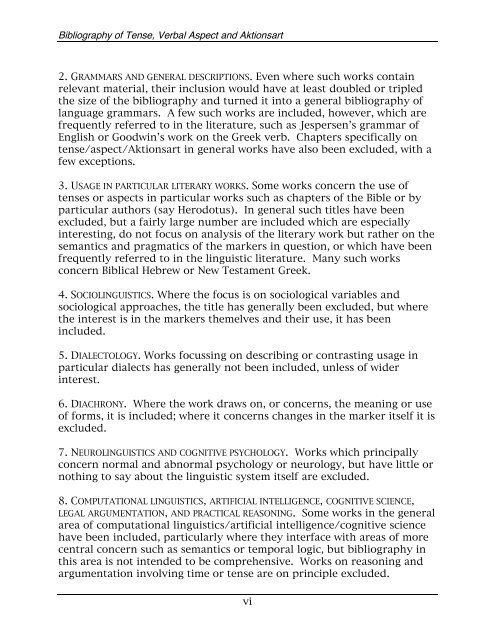
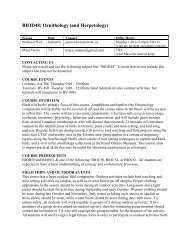
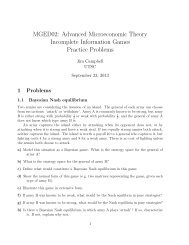
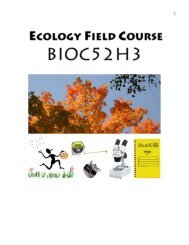

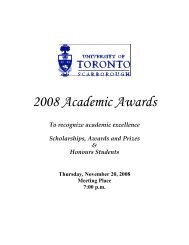
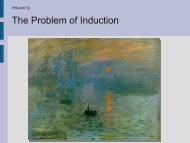
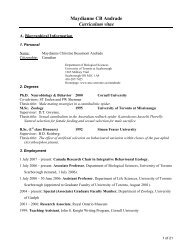
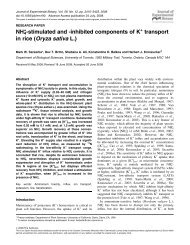
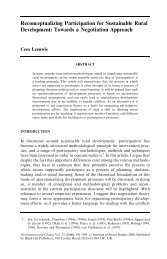
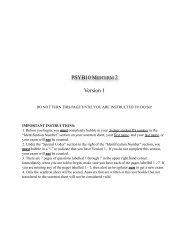
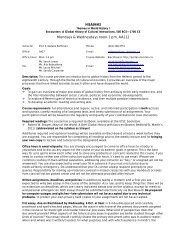
![[Enter course name - Syllabus] - University of Toronto Scarborough](https://img.yumpu.com/50068522/1/190x245/enter-course-name-syllabus-university-of-toronto-scarborough.jpg?quality=85)
